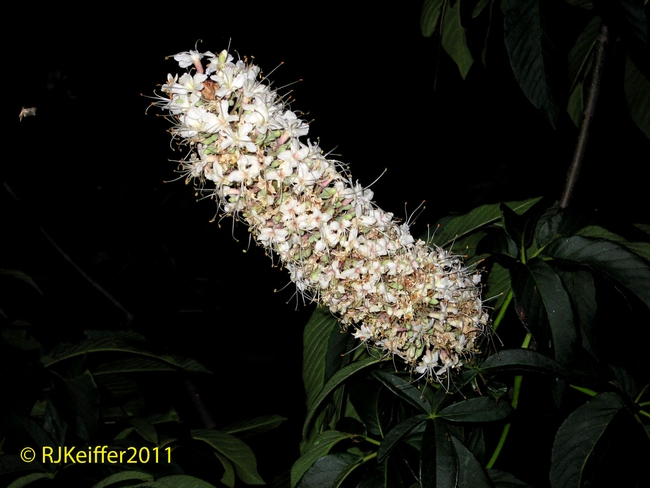- Author: Robert J Keiffer
The California Buckeye, sometimes called California Horse-chestnut (Aesculus californica) has to be one of the most amazing native tree species in California. It is so well adapted to our Mediterranean climate that it is one of the earliest trees to leaf out in the early spring (February), thus placing a lot of energy into growth when water is available. And, then most significant adaption is the tree's ability to bloom right now in late June, and develop mature seeds by late August ...which is also the time when the tree "shuts-down" and loses all of its leaves and enters dormancy. This two month journey of flower to fruit is an incredible feat in the plant world. Of course late summer/early fall is the dry time of the year when other tree species are struggling for water and nutrients ... but the buckeye has simply shut-down.
In the North Coast of California buckeyes can be found intermingled in Blue Oak woodlands, in mixed evergreen forests of Black Oak, Digger Pine, Ponderosa Pine and Interior Live Oak, or they can be found standing alone in grasslands at lower elevations. Local native American tribes, including those of the Pomo, Yokut, Miwok, and Luiseno, used the poisonous nuts to stupefy schools of fish in small streams. These tribes, especially the Pomo tribe, utilized the orange-brown nuts for eating by removing the shells, pounding the seeds into a flour paste, and then going through a lengthy leaching process to remove the poisonous saponins. If eaten in the raw state then the nut seeds are poisonous to humans and most other wildlife. Western gray squirrels and California ground squirrels however relish them. The flowers are also poisonous to honey bees.



